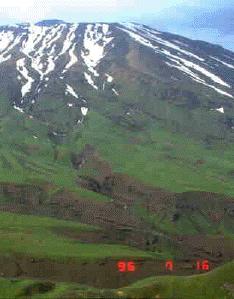This image shows the remains of a lahar on the slopes of Mt. Akutan in Alaska.
Click on image for full size
Image from: U.S. Geological Survey, photo by Robert McGimsey
Lahar
Lahars are mudslides caused by the mixing of volcanic ash and debris with water. They can occur when the heat from a volcano melts snow and ice on the volcano's summit, or if an eruption disturbs a crater lake.
Lahars can cause great environmental and economic damage. They can cover fertile fields and topple buildings. Trees, boulders, and other debris which lahars pick up can shear off anything they flow by at ground level.
Lahars are very dangerous, and anyone caught in the path of one is in great danger of death from severe crushing injuries.
You might also be interested in:
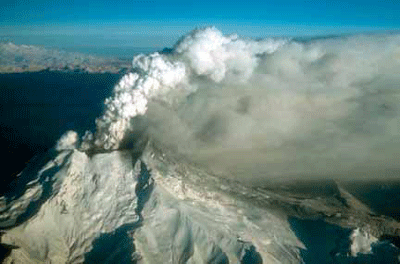
Ash is made of millions of tiny fragments of rock and glass formed during a volcanic eruption. Volcanic ash particles are less than 2 mm in size and can be much smaller. Volcanic ash forms in several ways
...more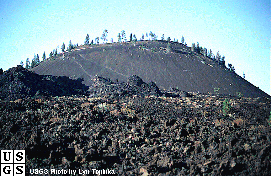
Cinder cones are simple volcanoes which have a bowl-shaped crater at the summit and rarely rise more than a thousand feet above their surroundings. They usually are created of eruptions from a single vent,
...more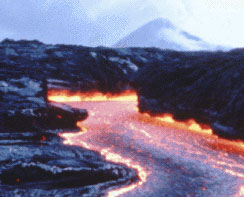
Lava can move in broad flat lava flows, or it can move through constrictive channels or tubes. Lava flows have a large surface area so they tend to cool quickly and flow slowly. The fastest unconstricted
...more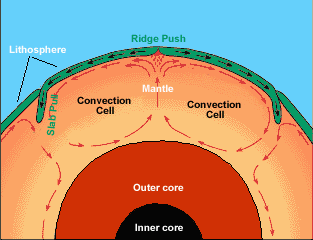
Earth’s center, or core, is very hot, about 9000 degrees F. This heat causes molten rock deep within the mantle layer to move. Warm material rises, cools, and eventually sinks down. As the cool material
...more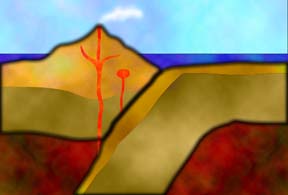
Many kinds of surface features provide evidence of a sliding lithosphere. When two plates move apart, rising material from the mantle pushes the lithosphere aside. Two types of features can form when
...more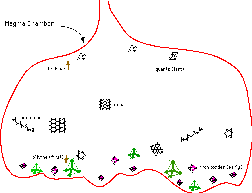
Magma consists of remelted material from Earth's crust and fresh material from the aesthenosphere, relatively near the Earth's surface. When magma is erupted onto the surface in the form of lava, it becomes
...more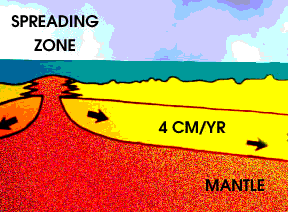
As the Earth cools, hot material from the deep interior rises to the surface. Hot material is depicted in red in this drawing, under an ocean shown in blue green. The hotter material elevates the nearby
...more


